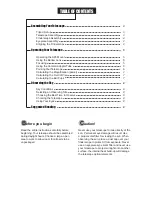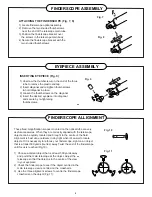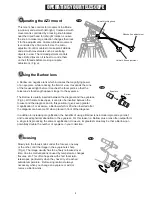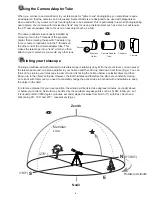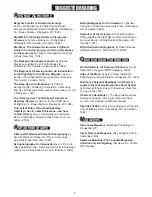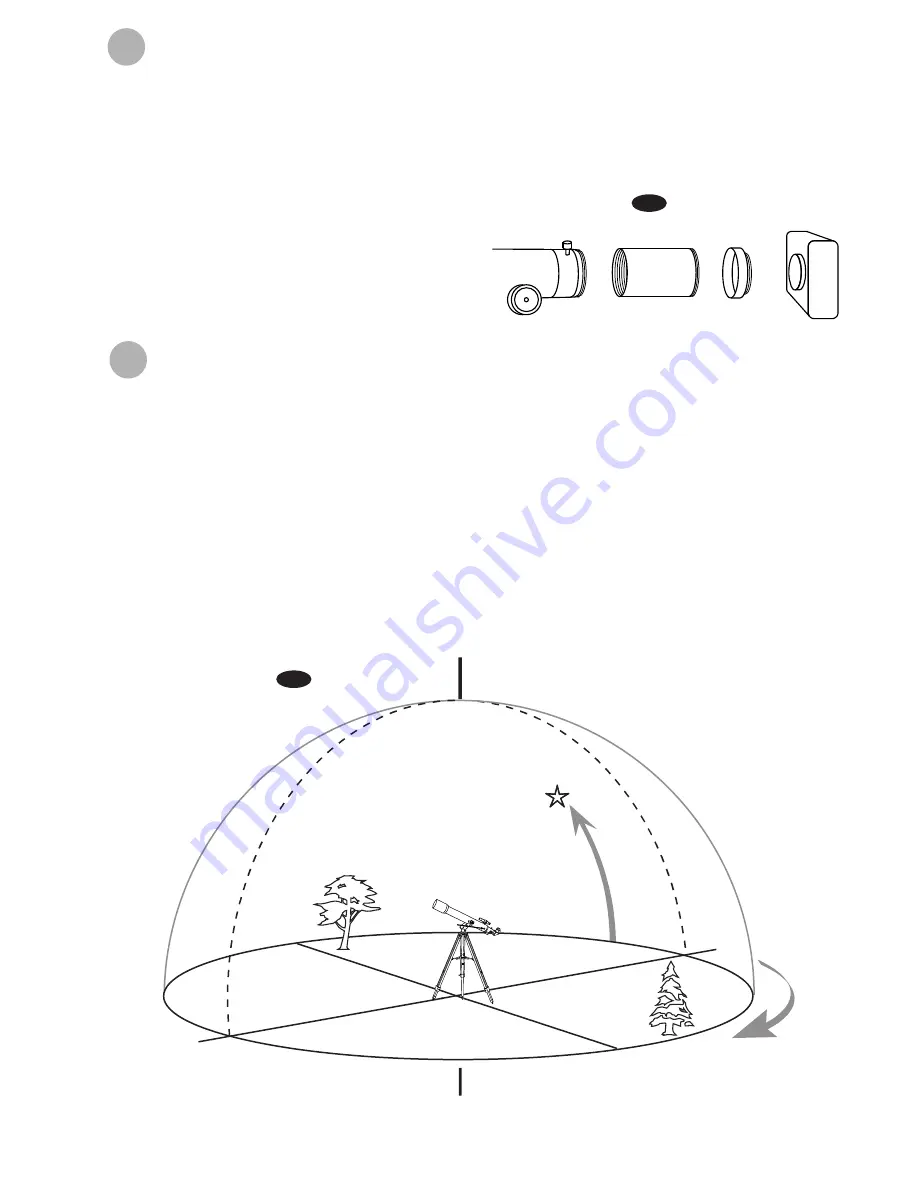
6
P
ointing your telescope
Pointing an altitude-azimuth (alt-az) mounted telescope is relatively easy. With the mount level, you can swivel
the telescope around on a plane parallel to your horizon and then tilt it up and down from there (Fig.c). You can
think of it as turning your telescope in azimuth until it is facing the horizon below a celestial object and then
tilting it up to the object's altitude. However, the Earth rotates and therefore the stars are constantly moving,
so to track with this mount you need to constantly nudge the optical tube in both azimuth and altitude to keep
the object in the field.
In reference material for your local position, the altitude will be listed as ±degrees (minutes, seconds) above
or below your horizon. Azimuth may be listed by the cardinal compass points such as N, SW, ENE, etc., but
it is usually listed in 360 degree (minutes, seconds) steps clockwise from North (0°), with East, South and
West being 90°, 180° and 270 °, respectively (Fig.e).
Fig.e
Rotate in Azimuth
(90°)
(180°)
S
E
(270°)
W
Zenith
Meridian
Line
Tilt in
Altitude
Nadir
(0°/360°)
N
U
sing the Camera Adapter Tube
When you connect a camera directly to your telescope for "prime focus" photography, you sometimes require
an adapter so that the camera can be focussed. Some refractors are designed to be used with diagonals so
when used with only a camera, their focal length has to be extended. This is particularly true when photographing
near objects. Your camera with its telescope "lens" may focus on a distant object such as a star, but will require
the 2.5" camera adapter tube to focus on a near object such as a bird.
The camera adapter tube is easily installed by
screwing it onto the T-threads of the eyepiece
holder, then screwing the specific T-adapter ring
for your camera (optional) onto the T-threads on
the other end of the camera adapter tube. This
makes the telescope into a "lens" which you then
attach to your camera as you would any other lens.
Camera Adapter
Tube
T-adapter
Camera
Focuser
Eyepiece
Holder
Fig.d


